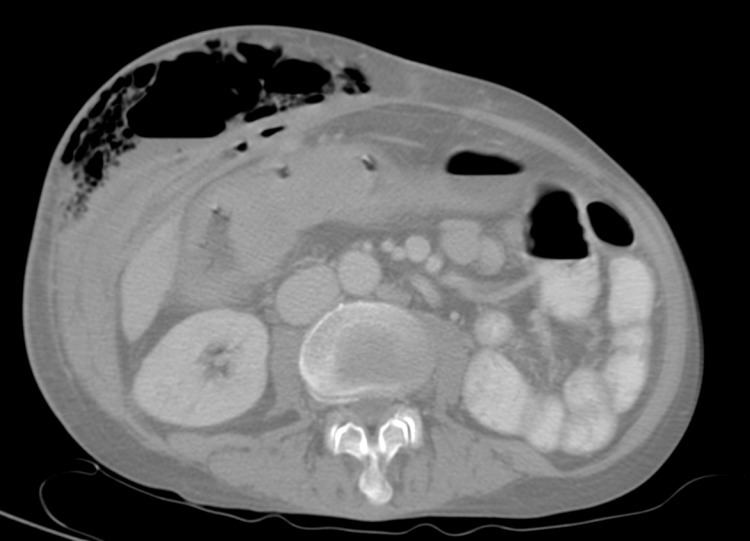MeSH D005402 | MedlinePlus 002365 | |
 | ||
Pronunciation UK /ˈfɪstjʊlə/, US /ˈfɪstʃələ/, /ˈfɪʃtʃələ/ | ||
A fistula is an abnormal anastomosis, that is, an abnormal connection between two hollow spaces (technically, two epithelialized surfaces), such as blood vessels, intestines, or other hollow organs. Fistulas are usually caused by injury or surgery, but they can also result from an infection or inflammation. Fistulas are generally a disease condition, but they may be surgically created for therapeutic reasons.
Contents
- Locations
- H Diseases of the eye adnexa ear and mastoid process
- I Diseases of the circulatory system
- J Diseases of the respiratory system
- K Diseases of the digestive system
- M Diseases of the musculoskeletal system and connective tissue
- N Diseases of the urogenital system
- Q Congenital malformations deformations and chromosomal abnormalities
- T External causes
- Types
- Causes
- Treatment
- Therapeutic use
- Etymology
- References
In botany, the term is most common in its adjectival forms, where it is used in binomial names to refer to species that are distinguished by hollow or tubular structures. Monarda fistulosa, for example, has tubular flowers; Eutrochium fistulosum has a tubular stem; and Allium fistulosum has hollow or tubular leaves.
Locations
Fistulas can develop in various parts of the body. The following list is sorted by the International Statistical Classification of Diseases and Related Health Problems.
H: Diseases of the eye, adnexa, ear, and mastoid process
I: Diseases of the circulatory system
J: Diseases of the respiratory system
K: Diseases of the digestive system
M: Diseases of the musculoskeletal system and connective tissue
N: Diseases of the urogenital system
Q: Congenital malformations, deformations and chromosomal abnormalities
T: External causes
Types
Various types of fistulas include:
Although most fistulas are in forms of a tube, some can also have multiple branches.
Causes
Various causes of fistula include:
Treatment
Treatment for fistula varies depending on the cause and extent of the fistula, but often involves surgical intervention combined with antibiotic therapy.
Typically the first step in treating a fistula is an examination by a doctor to determine the extent and "path" that the fistula takes through the tissue.
In some cases the fistula is temporarily covered, for example a fistula caused by cleft palate is often treated with a palatal obturator to delay the need for surgery to a more appropriate age.
Surgery is often required to assure adequate drainage of the fistula (so that pus may escape without forming an abscess). Various surgical procedures are commonly used, most commonly fistulotomy, placement of a seton (a cord that is passed through the path of the fistula to keep it open for draining), or an endorectal flap procedure (where healthy tissue is pulled over the internal side of the fistula to keep feces or other material from reinfecting the channel). Treatment involves filling the fistula with fibrin glue; also plugging it with plugs made of porcine small intestine submucosa have also been explored in recent years, with variable success. Surgery for anorectal fistulae is not without side effects, including recurrence, reinfection, and incontinence. High rate of recurrence and more chances of complications like incontinence are always there in fistula surgeries (Anal Fistula).
It is important to note that surgical treatment of a fistula without diagnosis or management of the underlying condition, if any, is not recommended. For example, surgical treatment of fistulae in Crohn's disease can be effective, but if the Crohn's disease itself is not treated, the rate of recurrence of fistula is very high (well above 50%).
Therapeutic use
In people with renal failure, requiring dialysis, a cimino fistula is often deliberately created in the arm by means of a short day surgery in order to permit easier withdrawal of blood for hemodialysis.
As a radical treatment for portal hypertension, surgical creation of a portacaval fistula produces an anastomosis between the hepatic portal vein and the inferior vena cava across the omental foramen (of Winslow). This spares the portal venous system from high pressure which can cause esophageal varices, caput medusae, and hemorrhoids.
Etymology
The Latin word fistula (UK /ˈfɪstjʊlə/ or US /ˈfɪstʃələ/ or /ˈfɪʃtʃələ/, plural fistulas /-ləz/ or fistulae /-li/ or /-laɪ/) literally means tube or pipe.
